NOVEMBER 5, 2021: Today is Friday, and Shabbat starts at 5:12. To give us time to get ready for Shabbat, we stayed out only a few hours.
Our first stop was right around the corner from our apartment – the Livraria Bertrand bookstore. This book shop is in the Guiness book of records as the oldest bookstore. It consists of a series of rooms, sorted by topics. The first room is the current bestsellers. Like in the bookshop we visited in Madeira, the books in this room are displayed on the shelves with the cover showing. You see the full cover and not just the side of the book with the name and author like in Barnes and Noble.
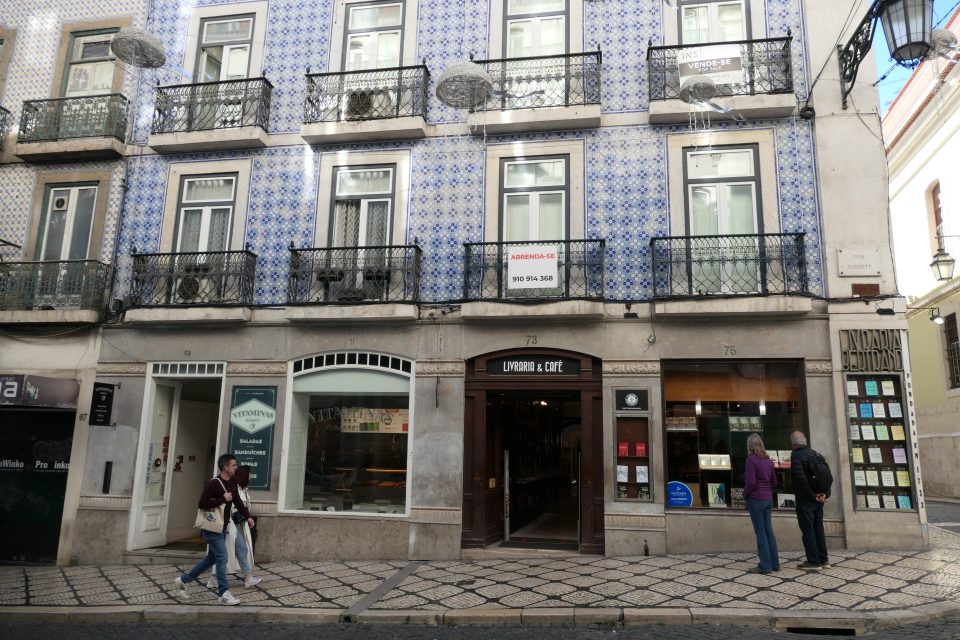
Livraria Bertrand bookstore 
The oldest operating bookshop according to Guiness World Records 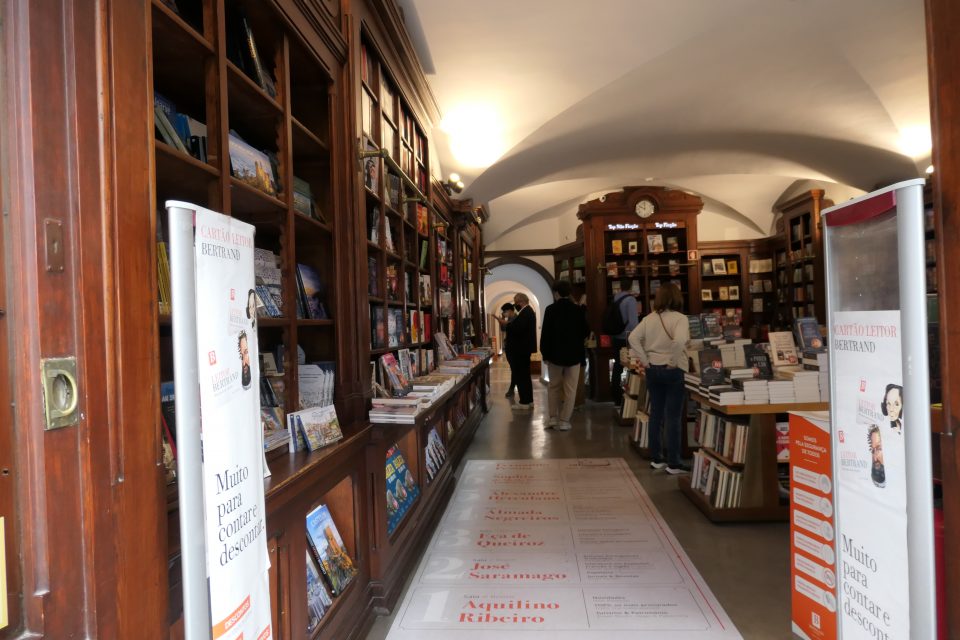
Looking in. Notice the books on the shelves have their covers facing forward.
From there we continued to a local print shop. In preparing for this trip, I created a document with what to look for in the cities we are visiting. This is a collection of screen shots from different sources. For example, in a video on Jewish Heritage in Portugal, they show in one scene a doorway to a house in a small village that has the symbol of the New Christians (converted Jews). I would stop the video, take a screen shot, and place it in a document according to city. When we reach that small village, we will then have a better idea of what we are looking for. Unfortunately, I forgot to print the document before we left, so we went to a local print shop near the apartment and printed there. The whole experience went very smoothly, despite the worker not speaking English.
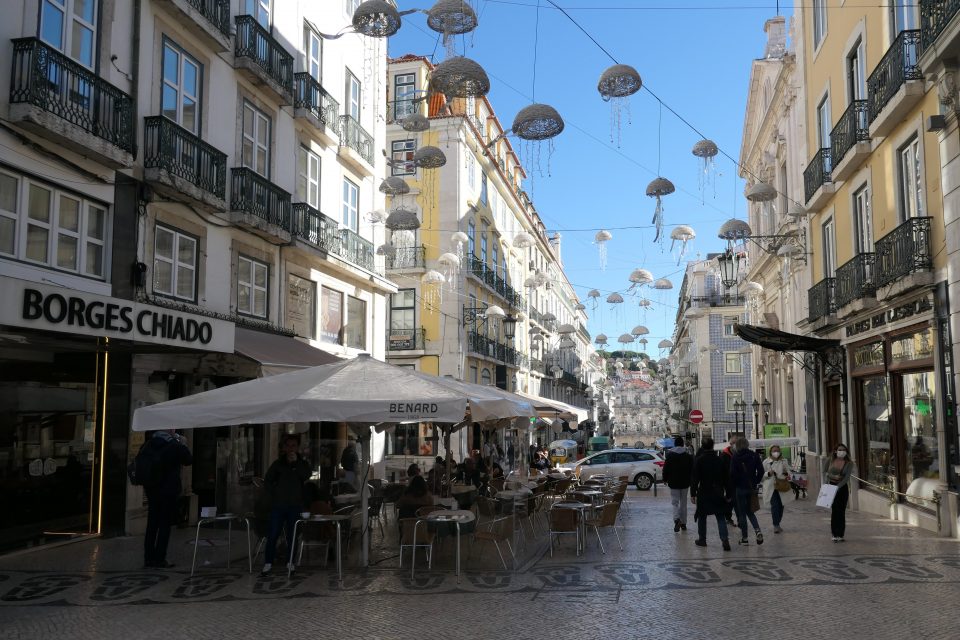
On the way to the printer. Typical street scene. At the very back, at the top of the hill by the green trees, is the ever-present castle 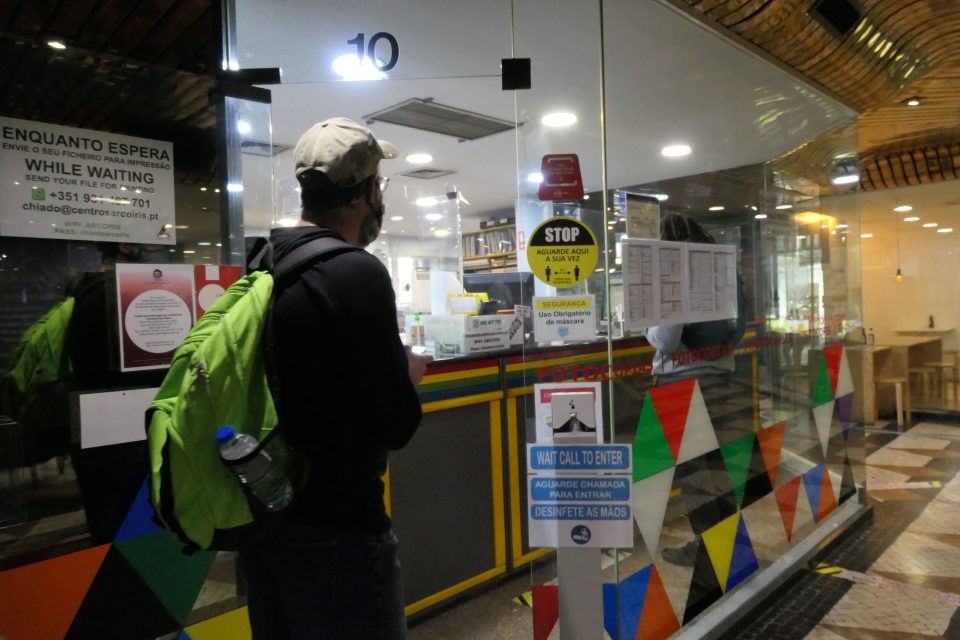
Waiting for our turn at the print shop
Just around the corner from the printer was the Carmo Archeological Museum. The museum is situated in the ruins of the old Church of Santa Maria do Carmo, which was destroyed in the earthquake of 1755. Among the displays in the yard, is a Hebrew tombstone. Mark calculated that the Hebrew date on the tombstone corresponds to 1815. We found this confusing because we thought that there were no Jews in Lisbon during that time – it is towards the very end of the inquisition and before the return of the Jews in the 1900’s. Sunday we have a tour about the Jewish History of Lisbon with a historian. We will try to learn more about this tombstone from him.
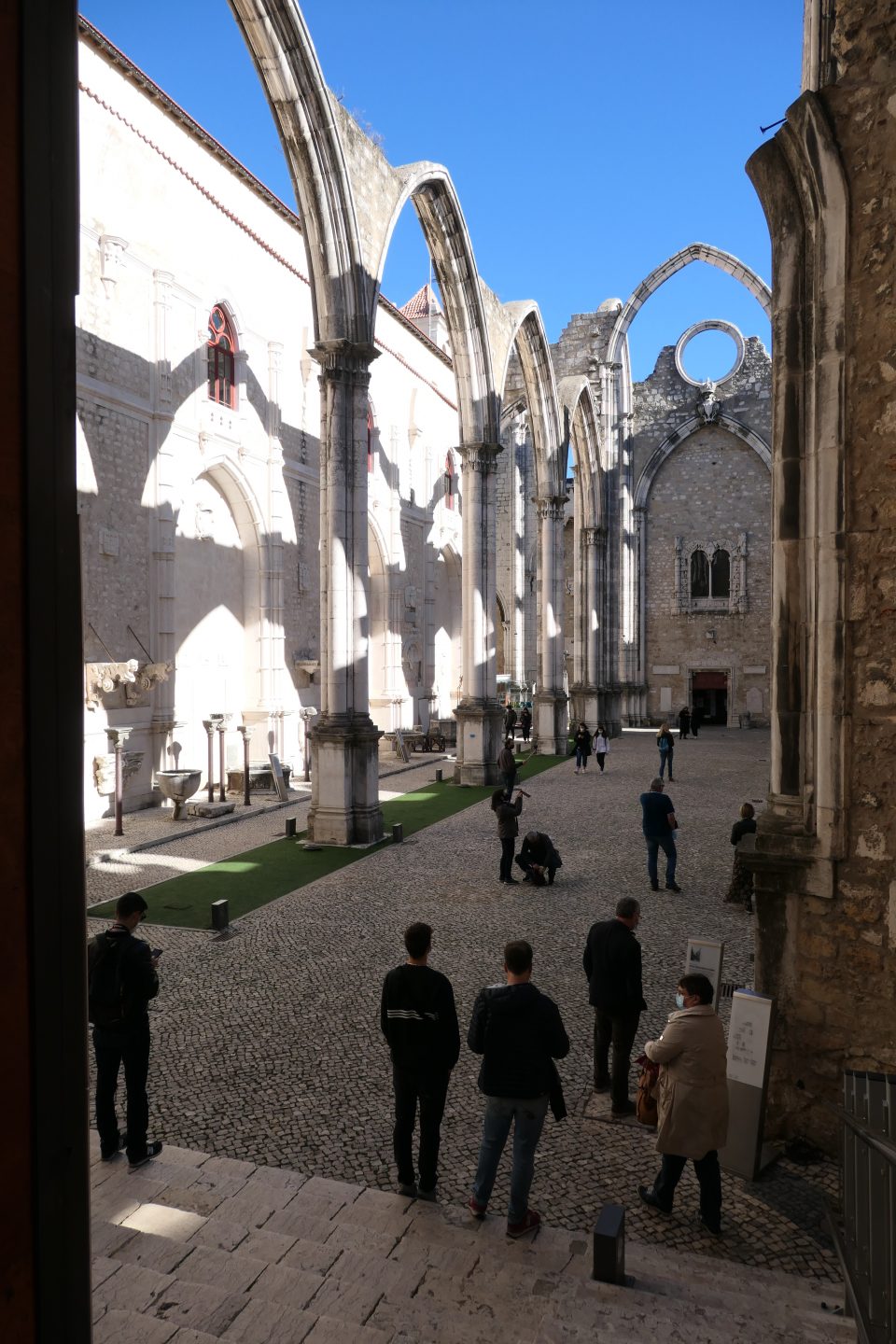
Carmo Archeological Museum 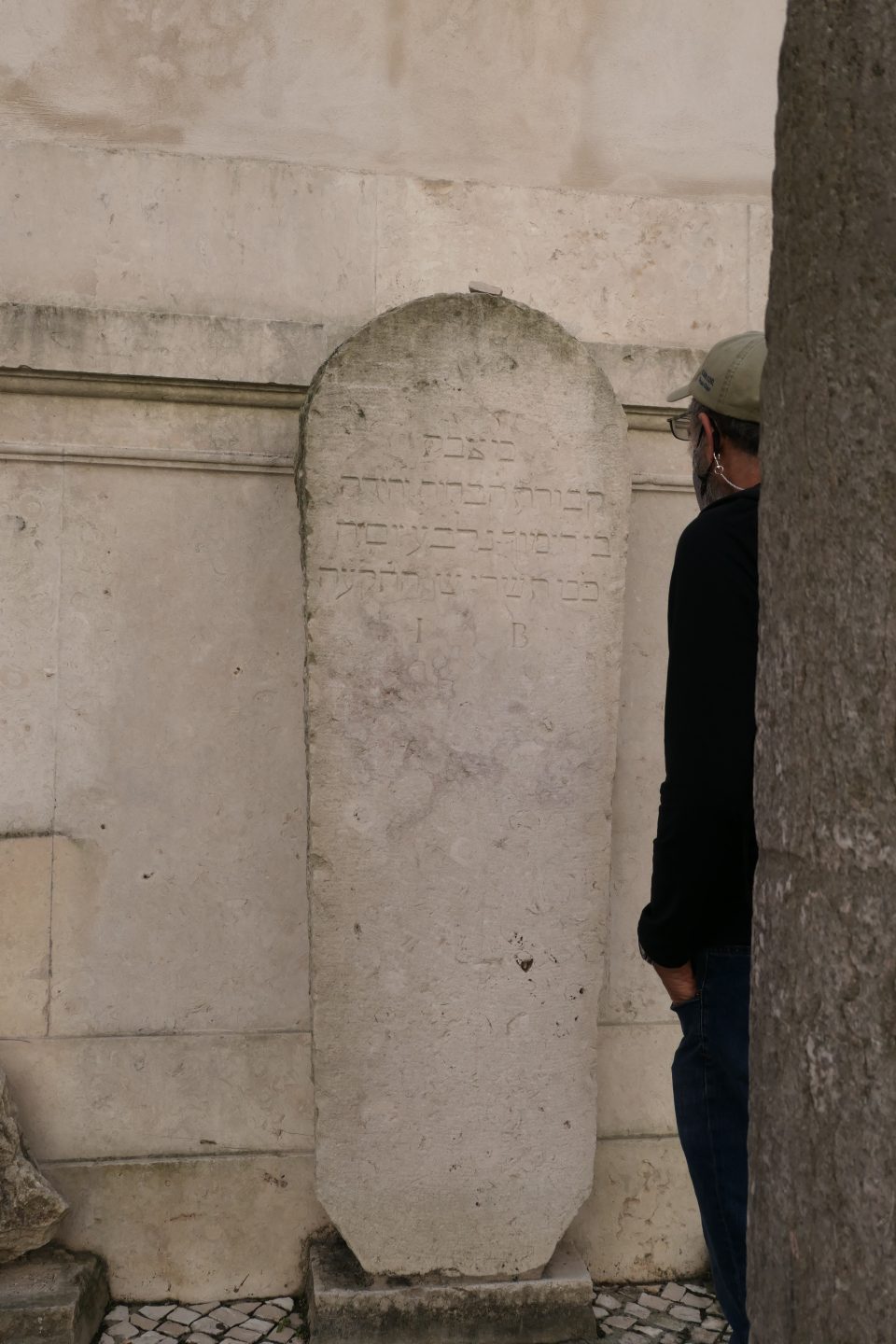
Examining the Hebrew tombstone
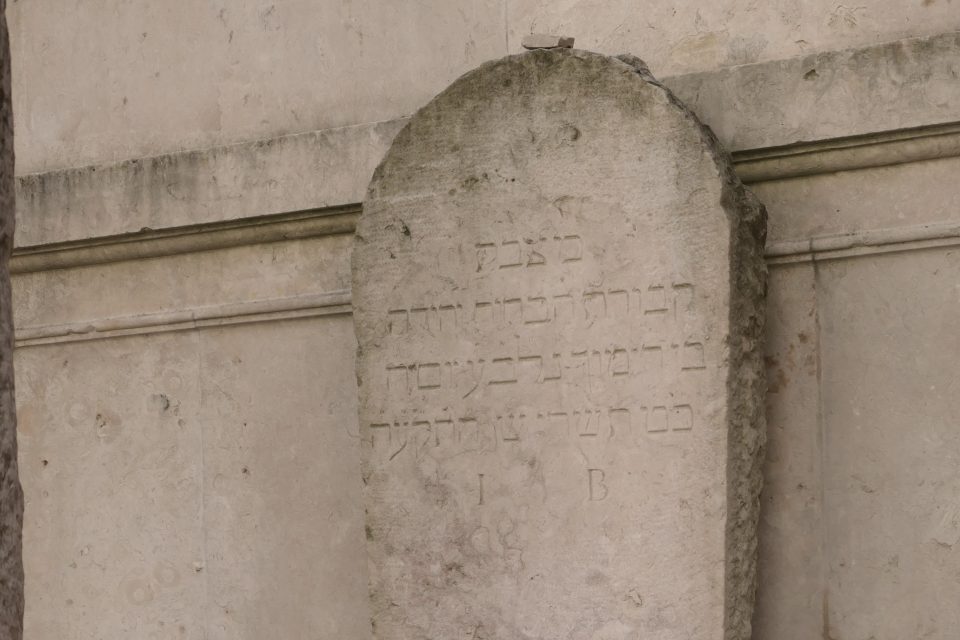
The Hebrew tombstone
Right outside the museum, is the viewing platform at the top of the Elevator de Santa Justa. In the past it was difficult to travel from the lower streets in Lisbon to the higher ones, and the elevator was built to facilitate this. It was completed in 1902 and designed by Raoul Mesnier du Ponsard, a student of Gustav Eiffel (the architect behind the Eiffel Tower). The views from the viewing platform were stunning.
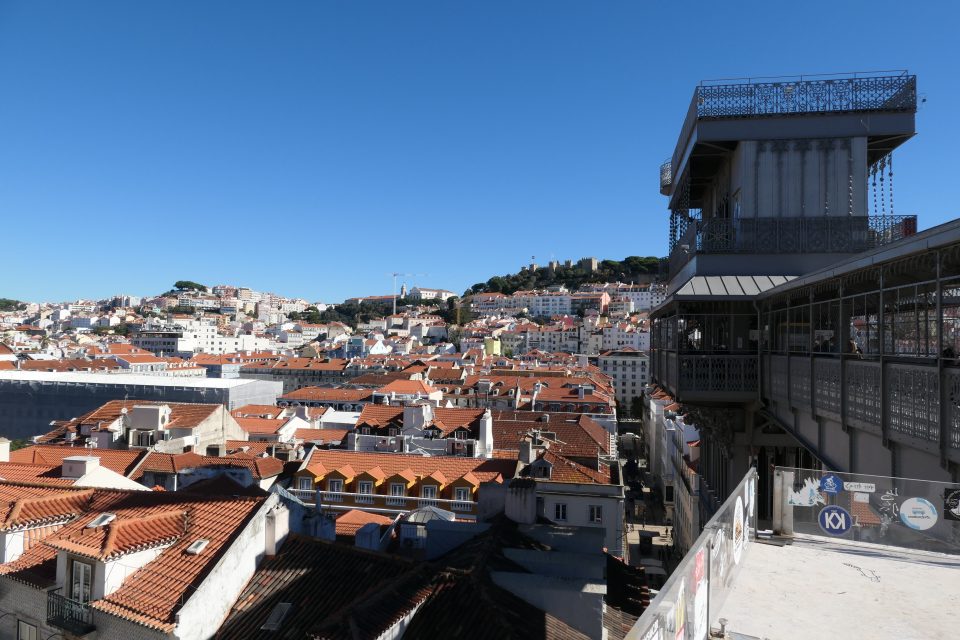
The top of the Elevator de Santa Justa on the right, the castle on top of the hill in the center 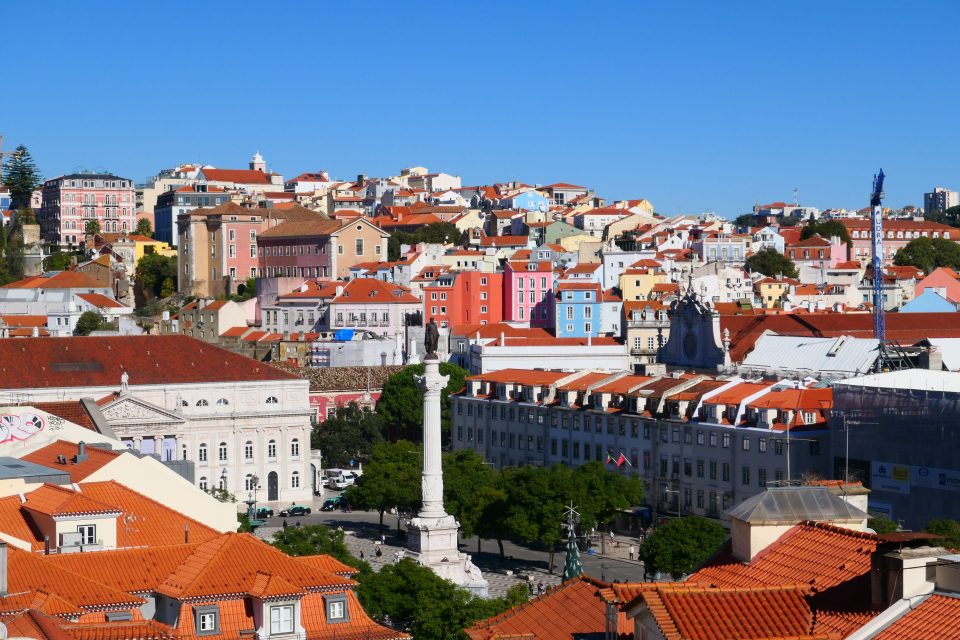
Rossio Square seen from the top of the elevator. Love the colors! 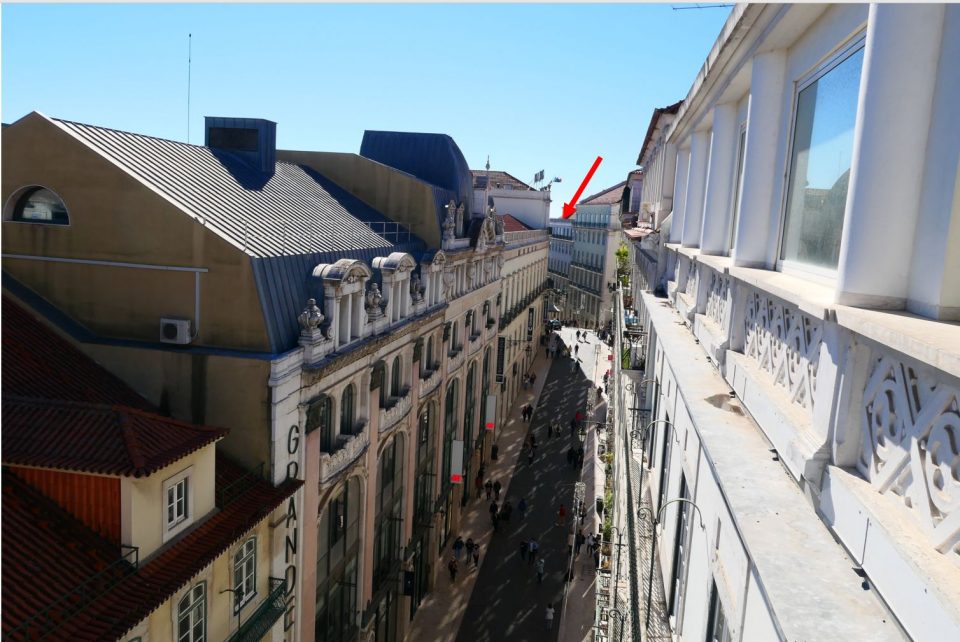
Our street and our apartment 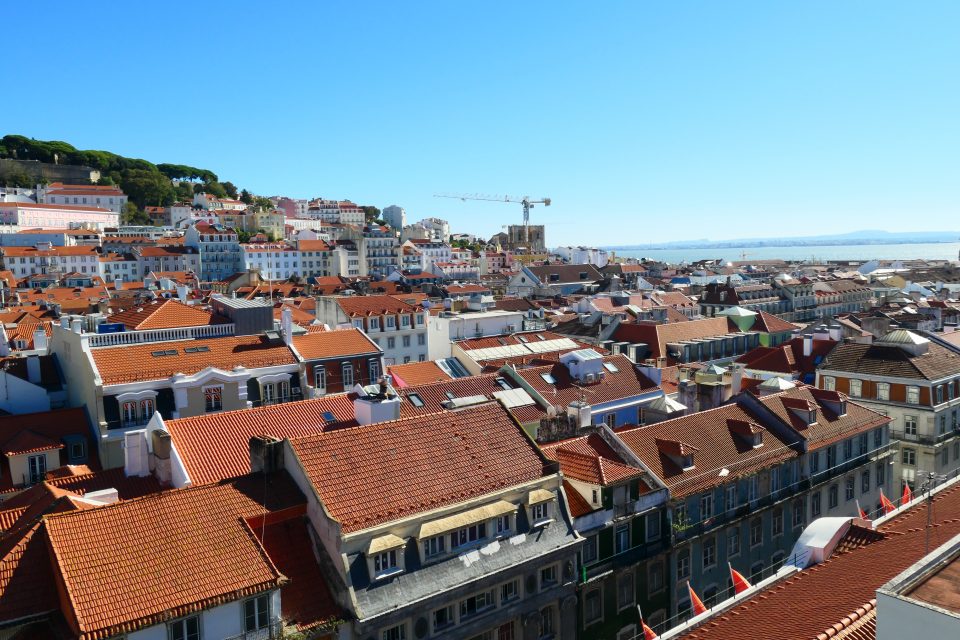
More views 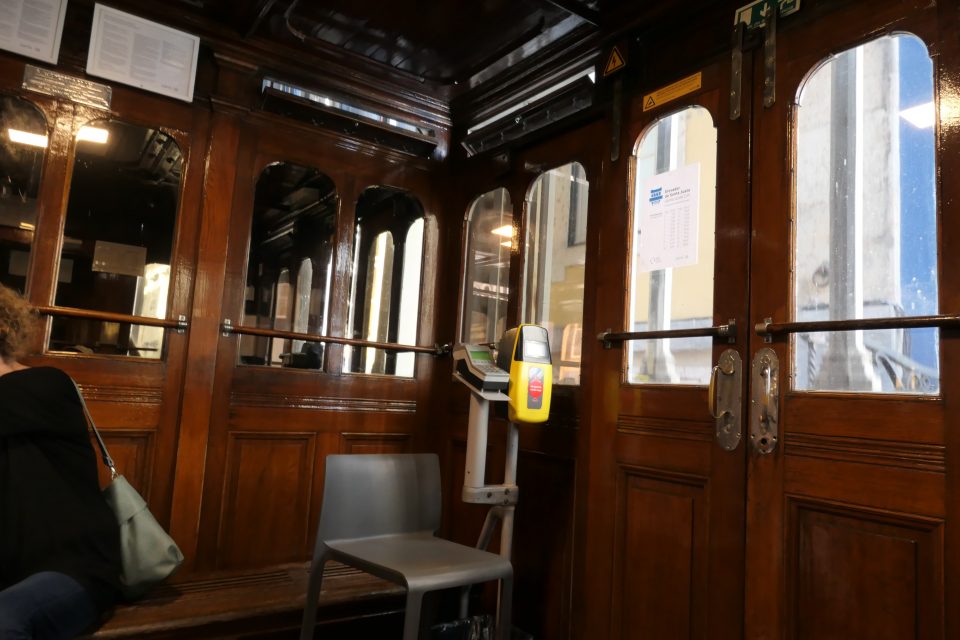
Inside the elevator 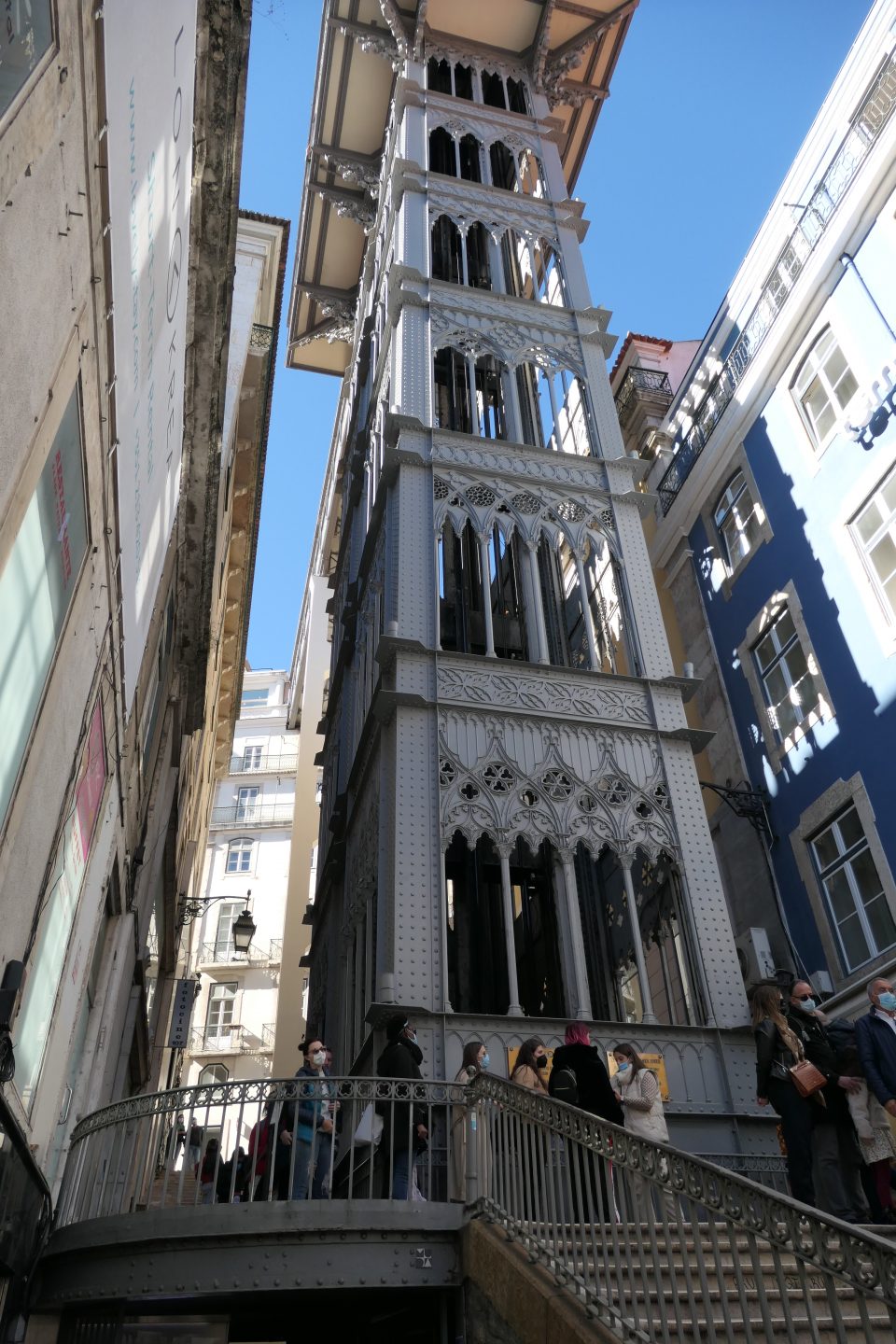
From the bottom of the elevator looking up
Considering I was having trouble walking, the elevator was greatly appreciated. It brought us much closer to our next destination – Rossio Square. Rossio Square is the liveliest area in Lisbon. The square and its surrounding streets are packed with some of the city’s most famous restaurants, bars and shops. On one end of the square is the Queen Maria II National Theatre, built on the site of Estaus Palace, which was destroyed by fire in 1836. In the 1500’s and until the inquisition was officially ended in 1821, Estaus Palace was the headquarters of the Portuguese Inquisition. It was here where the accused of secretly practicing the Jewish faith were subjected to trial, torture and execution. Rossio square was used as the setting for public executions.
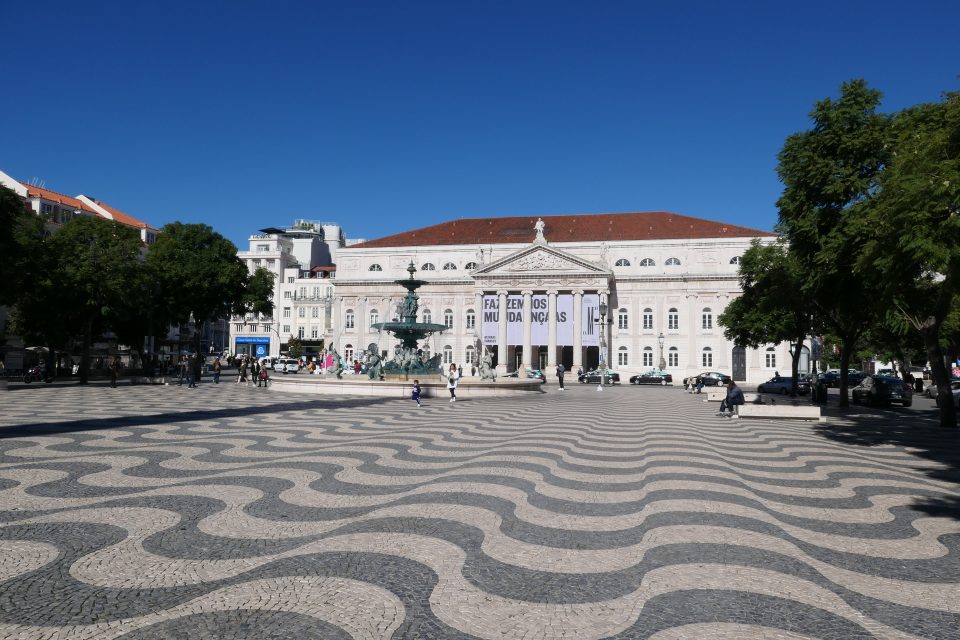
Rossio Square with the theatre in the back
In April 1506, thirty years before the establishment of the Portuguese Inquisition and nine years after the Jews were forced to convert to the Catholic Church, a massacre occurred here. The bloodshed lasted four days and is estimated to have resulted in the violent deaths of thousands of men, women and children. The victims were the “New Christians”, the Portuguese Jews forced to convert to Christianity. Today there is a monument that reads: “In memory of the thousands of Jews who were victimized by intolerance and religious fanaticism, killed on the massacre that started on 19 April 1506, on this square”.
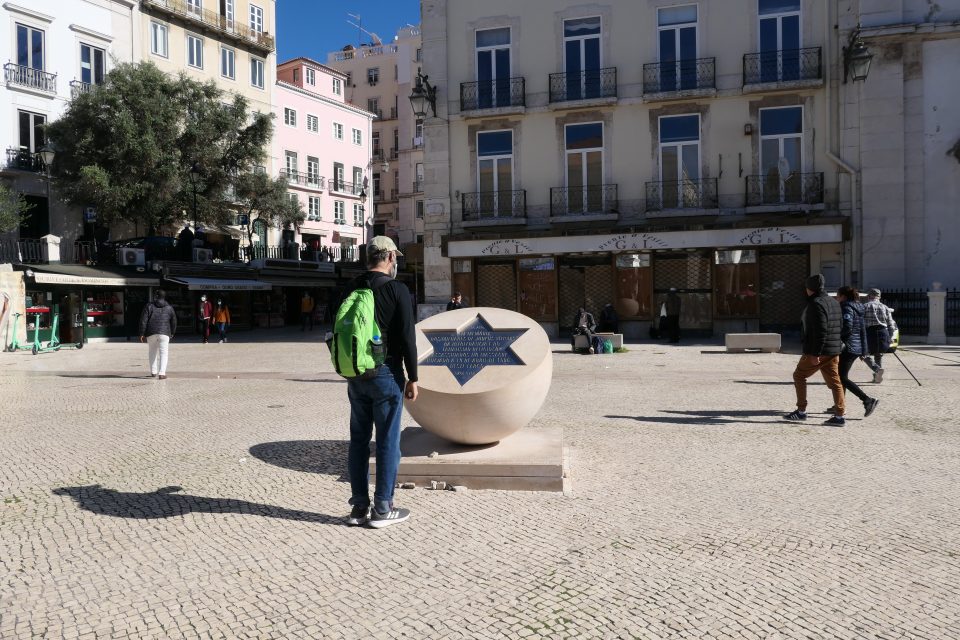
Mark about to verify the GPS of the Lisbon Massacre memorial 
The Lisbon Massacre of 1506 memorial
Many years ago, one of the first books my book club read was The Last Kabbalist of Lisbon by Richard Zimler. Knowing I was coming to Lisbon, I recently reread it. The setting of the book is during the Lisbon massacre. Recommended reading.
From Rossio square we had a 1.7 km uphill walk to the Shaarei Tikva synagogue. This is an easy name for me to remember since our daughter Tamar lives in the settlement Shaarie Tikva. It was important to me that we know exactly how to get there. In this city of confusing streets, I would be worried that Mark will not find the synagogue, or worse, not find his way back to the apartment on Shabbat, since he does not carry a phone with Google Maps then. Walking with the hiking stick, greatly helped, and even though the going was slow, we made it despite my painful knee. Shortly before reaching the place, we saw a store that said Kosher Food. We found a very small grocery store with a few products that we did not bring from Israel – like tomato sauce, techina, and cooked chickpeas. Then I hit the jackpot – they had small cans of Bartenura Moscota wine – my drink of choice at home. The cashier was from Jerusalem and it was the first Hebrew we heard since leaving Israel.
The gate to the synagogue yard was locked, but we could see the top of the building in the courtyard. When it was built in the 19th century, synagogues were not allowed to have entrances on the main street, and could only be accessed from inner courtyards.
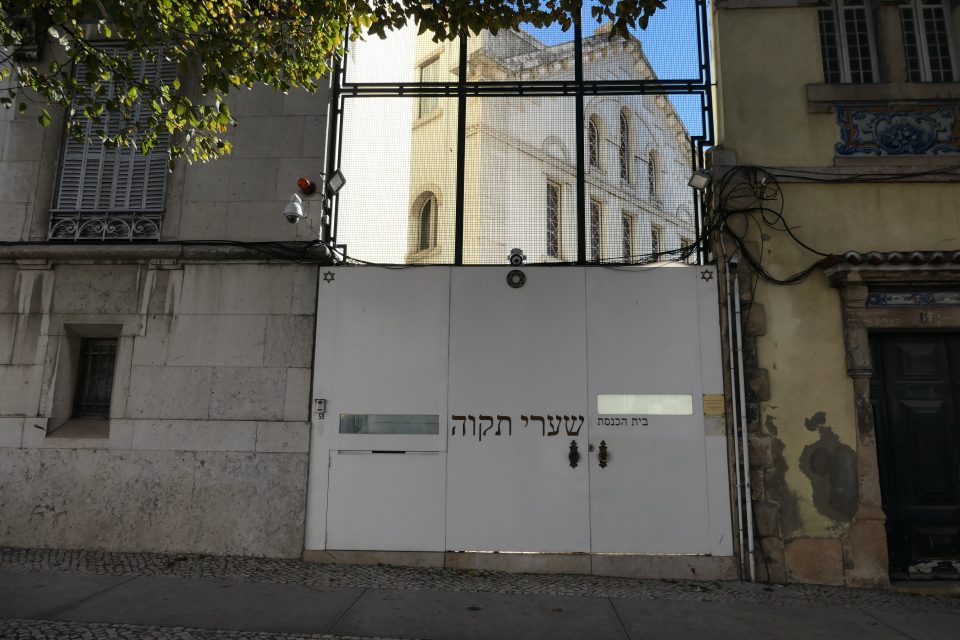
Gates to the Shaarei TIkva synagogue
We walked along the commercial street the synagogue is located on and took a break sitting on the edge of an old fountain to have lunch. We did some last minute grocery shopping in a very small grocery store nearby, and finished the day with an Uber back to the apartment, driving through various neighborhood.
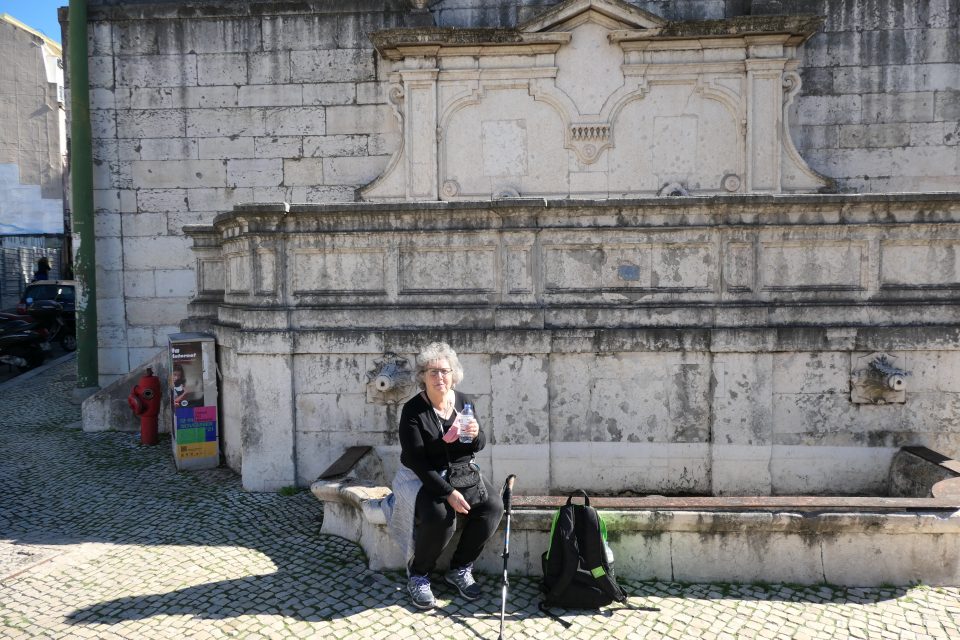
Lunch break
All over the city, there are now advertisements for a show called Glória that was released on Netflix today. The reason it is so highly promoted, is that it is the first series on Netflix that is 100% Portuguese. Filmed in Portugal, Portuguese actors, Portuguese scriptwriters, etc. The movie takes place in the 1960s during the Cold War, in the small village of Glória do Ribatejo, east of Lisbon, where the Americans located a broadcasting station for Radio Free Europe. Radio Free Europe would broadcast anti-communist propaganda to the Soviet Union, while they, the Soviets, did everything they could to stop the broadcasts. That is the historical background for the show. The series is about a Portuguese engineer working at the broadcasting station who is really a KGB agent.
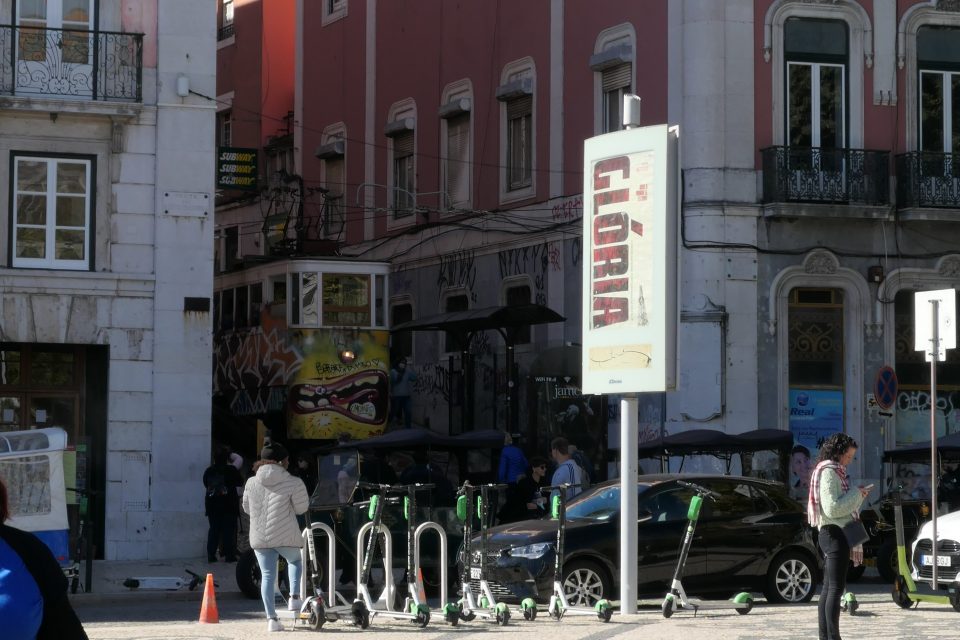
I took this photo because of the tram. Only when I got home did I notice that it also includes an ad for Gloria. Ads are everywhere.
Once back at the apartment, we then spent a long time trying to order food for Shabbat. Most of the places use Uber Eats for ordering on-line, but Uber Eats was only available in Portuguese and Google Translate did not translate the pages. After a frustrating hour, Mark walked to the Ao 26 Vegan Food Project restaurant and came home with our Shabbat meals. Tonight we are staying home. Shabbat Shalom.
P.S. As I write this, the windows are open to hear a musician standing in the street below and singing wonderfully. I am serenaded.
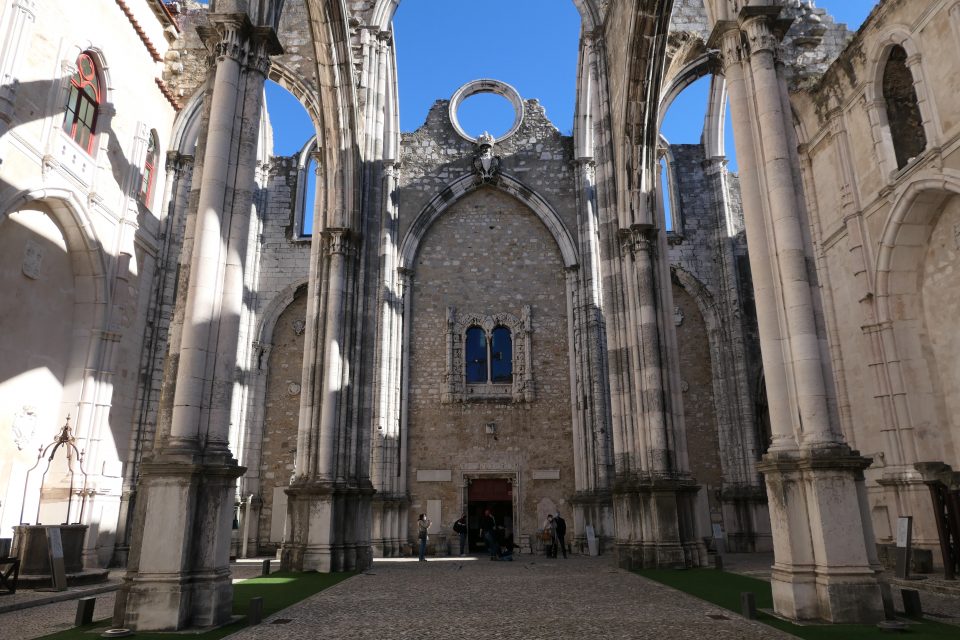
I remember reading the Last Kabbalist book but don’t remember anything about it! I should reread.
Great pictures of Carmo and the colorful houses! I second the recommendation of the book.